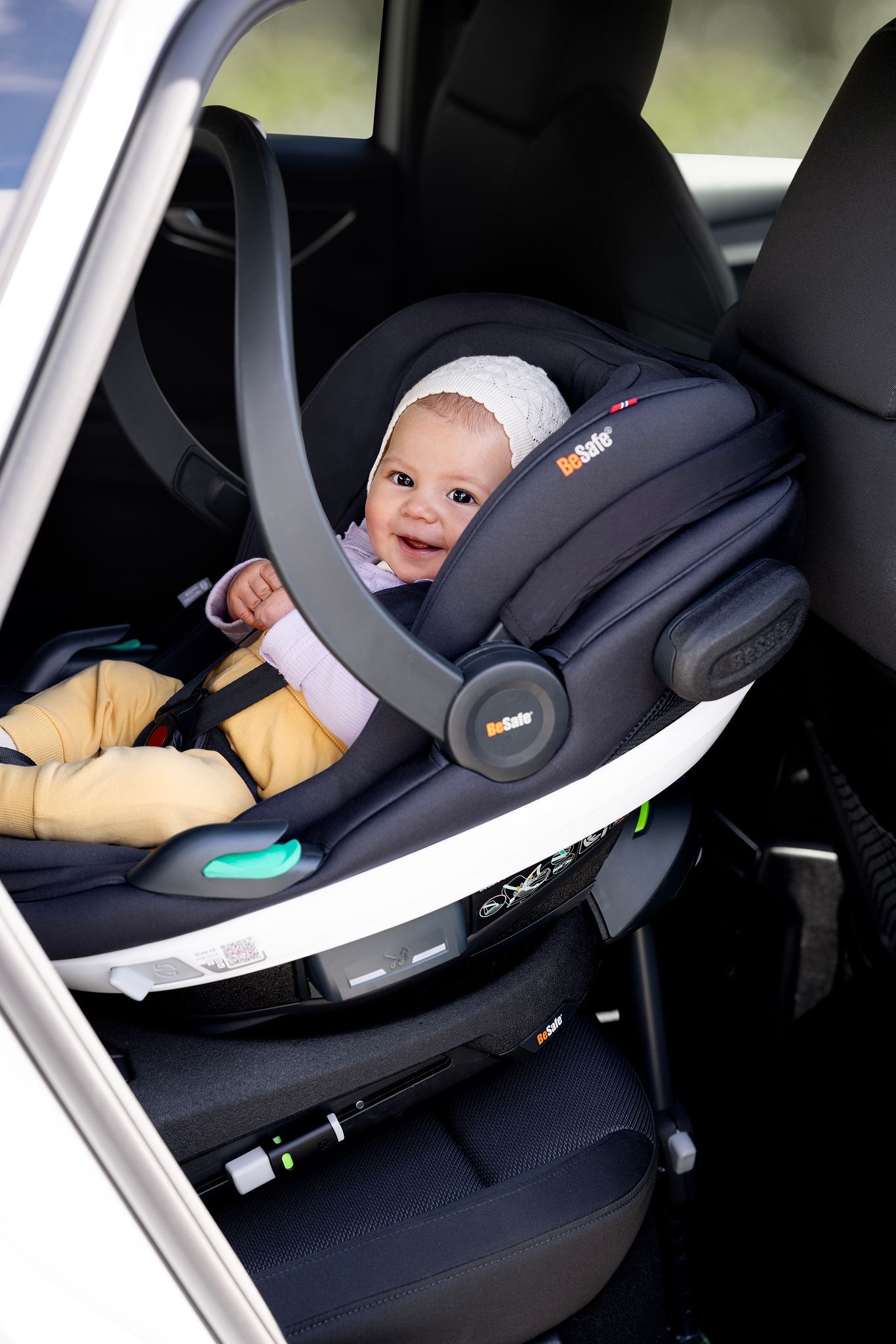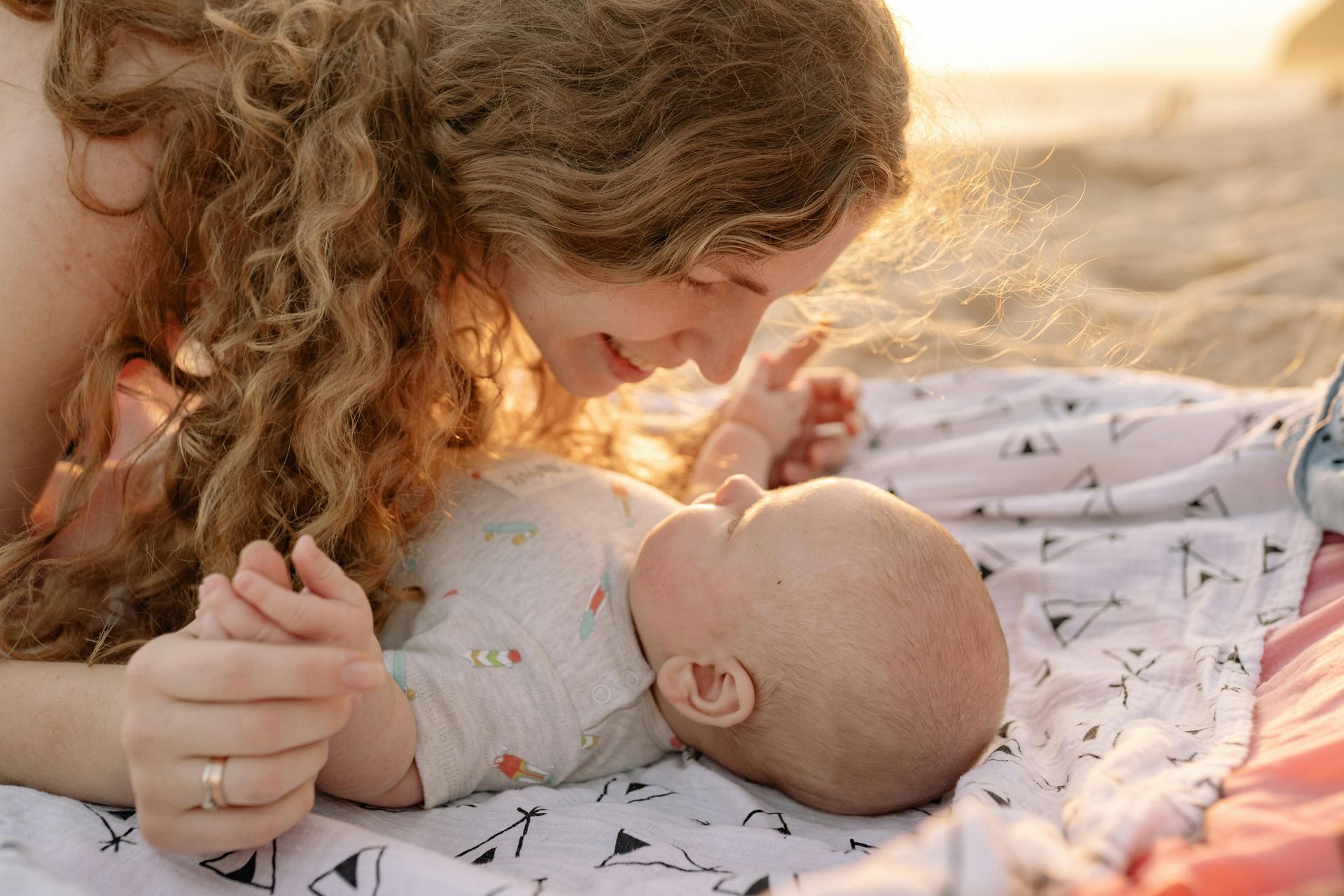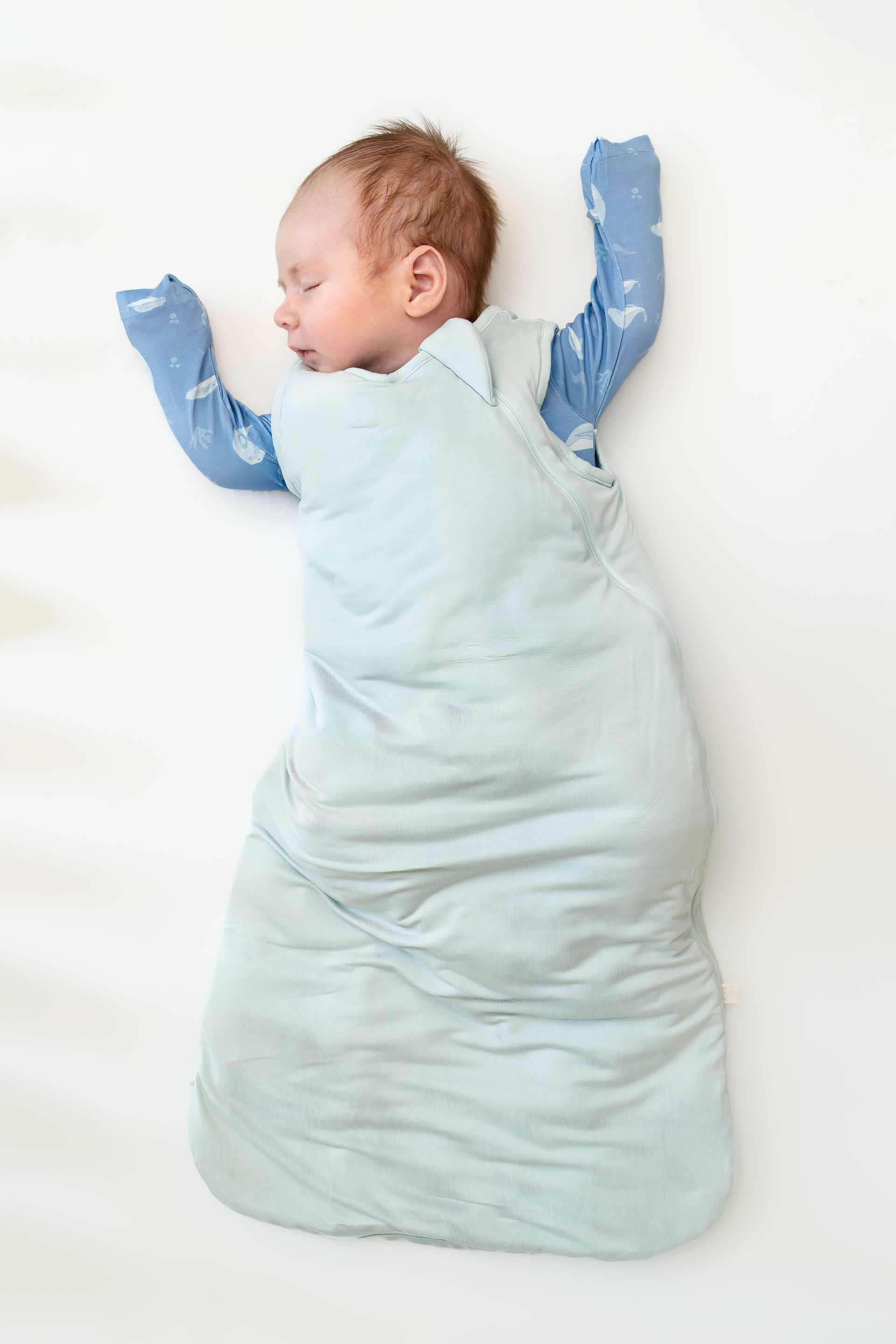Nap Transition Series: 1 to 0 Naps
lbenjell • January 23, 2023
The only constant about baby sleep is that there is no constant. Am I right? Just when you feel like you have a rhythm, you figured out what your baby needs and you can rely on somewhat of a schedule, BAM! things change. In comes a nap transition and with it comes changing schedules, an adjustment period, some over tiredness and maybe even some early morning wakes. This blog post is one of four in a series of posts delving into the world of nap transitions. To read more about the 2-1 transition, you can click here.
Naps – you either love them or hate them. For some parents, their child’s nap is a time for them to get things done, like cleaning, working, or catching some sleep for themselves! For others, nap time is an inconvenience…it requires you to stop what you’re doing, head home, and ensure your child gets their needed sleep.
I definitely was not in the category that viewed naps as an inconvenience. In fact, when my son dropped his naps, I cried. Real tears.
But I understand that for some families, the 1-0 nap transition is an exciting time, as you no longer have to stop in the middle of the day to get your little one down for a nap. And I also understand that, for other families, they don’t have a say when their child transitions away from naps, as their daycare may mandate naps end by a certain age.
Regardless of your stance, the 1-0 nap transition is one that I would caution anyone to rush toward. Children still need sleep in the day, and dropping naps too soon could wreak havoc on overnight sleep, their behavior, or their ability to focus.
But when your child is showing you signs that they’re ready, here are some tips to help make this transition an easy one.
The Signs
If you think your child is ready to drop all of their naps, I first encourage you to wait. It’s not uncommon for toddlers to protest naps – I mean, who wants to stop playing in the middle of the day to sleep?! (Besides parents, sometimes, of course.)
Nap protests aren’t always a sign that your child is ready to drop all of their naps permanently, and doing so could backfire.
So before diving in head first and saying goodbye to naptime, really tune in to your child and their sleep habits to determine if they’re ready.
While all children will be ready to drop their naps at their own time, here are a few signs your child may be ready:
- Your baby is in the vicinity of 3 years of age. I encourage parents to hold on to the nap as long as possible – even after 3 years old! – but I have seen some children ready to drop their nap at 2.5 years of age.
- The nap is interfering with bedtime. Maybe your child wakes from their nap later in the day, which pushes bedtime later into the evening. Or maybe your child simply isn’t tired when bedtime rolls around, and they take hours to fall asleep.
- In some cases, like with my son, you may notice long periods of wakefulness in the middle of the night. Your child may not be crying or fussing, just content in their crib, but awake for hours.
- Your child resists their naptime. This isn’t always a reliable sign, though, as it’s not uncommon for toddlers to want to play and stay awake. You’ll want to look at how their nap is interfering with their bedtime and behavior, and take it from there.
When you have identified that your child is in fact ready to drop all naps and they’re not just in a little strike or regression, then it’s time to make changes to their schedule.
The Transition
The transition from 1 to 0 naps isn’t one that needs to be rushed. In fact, it could take weeks and weeks to nail this transition.
For some kiddos, staying awake all day is a hard task. And even if they don’t need the nap, they may end up falling asleep at 5 p.m. because they’re exhausted by that time.
Or, you’ll find your little one sleeping on the couch after falling asleep at 4 p.m. while watching TV.
So instead of dropping the nap cold turkey, I would suggest to first shorten the nap by 15 minutes every few days. Then evaluate: How does that impact bedtime? Does it get better? If so, great! That may be all that your child needs right now.
If cutting the nap by 15 minutes doesn’t improve bedtime, we’ll cut it by another 15 minutes in a few days. And then we’ll evaluate again.
By the time you reach a 45-minute nap, you can start to look at other solutions.
Maybe today your child naps, but tomorrow they don’t. On the days they don’t nap, you can bring bedtime up earlier to make sure your child is able to survive the day with no daytime sleep. This method worked for my son when he was having long wakes each night.
A word of caution: When you make the nap optional, it can make it more difficult to navigate the days when nap isn’t optional. Having a plan of action and communicating with your child what the expectations are can help.
Secrets of the No-Nap Schedule
When you finally bid farewell to your child’s naps, I recommend still creating an hour of quiet time in the day. Having a period of down time can help your child make it through the day and it also helps prevent overstimulation.
For quiet time, you want to offer activities that aren’t too taxing. I like to make a box that’s reserved only for quiet time – you can place books, puzzles, or other quiet activities inside that your little one does only during that time period each day.
Some kiddos will fall asleep during quiet time, and that’s okay. Let them take a short nap, then wake them up and go on with the rest of the day.
For more tips on implementing quiet time successfully, check out this blog!
If the thought of making this transition alone is overwhelming, I invite you to schedule a 20-minute Discovery Call
with me. During our call, we can chat about your child’s current sleep situation, what’s causing the overwhelm, and how I can support you through the process.
Making changes in your child’s routine and sleep habits is never easy.
But together, we can ensure everyone in your house is getting the sleep they need to be the most confident, well-rested version of themselves possible.
I can’t wait to chat more with you!

Choosing a car seat is one of the most important decisions you’ll make as a parent. It’s not just about convenience — it’s about giving your child the best protection on every journey . In the UAE, where we drive long distances, face busy roads, and deal with extreme heat, the right car seat matters more than ever. But with so many options, how do you know which one to choose? Here are our top 4 tips to make car seat shopping easier — and safer. 1. PRIORITIZE SEATS THAT UNDERGO THE TOUGHEST CRASH TESTING Not all car seats are created equal. Many parents think if a seat is “legal,” it must be safe — but that’s not always true. ECE R44 : The most basic standard, now phased out in Europe. ECE R129 (i-Size) : Stricter testing with better head, neck, and side-impact protection. The Swedish Plus Test : The toughest crash test in the world — and the gold standard. What makes the Swedish Plus Test so important? It’s the only test that measures neck forces on a child’s body in a crash. Seats that pass prove they can keep neck loads below dangerous limits — a key factor in preventing serious injury. Many car seats fail completely under this extreme test, which shows just how high the bar is. 👉 If a car seat has passed the Swedish Plus Test , you can be confident it offers the highest level of safety for your child. 💡 Remember: Legal does not always mean safe . Go beyond the minimum. 2. CONSIDER YOUR CHILD'S HEIGHT, WEIGHT, AND AGE — EVEN THE SMALLEST ONES Every child grows differently, and size matters when it comes to safety. Preemies and smaller babies : Standard carriers often don’t provide the right fit. They need extra support for the head, neck, and body, plus proper harness positioning. Twins or multiples : Planning seating for two (or more) at once requires careful choice so every child gets the safest setup. As children grow, their height and weight percentiles determine how long a seat will last. We recommend car seats with at least a 25kg weight limit and 125cm height limit , which allow for extended rear-facing travel . Why rear-facing ? Research shows it is up to 5 times safer than forward-facing for children up to 6–7 years old. Better crash force distribution across the strongest part of the body. Superior head and neck protection , preventing the whip-forward motion that can cause spinal injury. Cocoon-like shell protection against front and side impacts. 💡 Bonus for UAE parents: The BeSafe Go Beyond with Preemie Inlay was designed with neonatal nurses to support even the tiniest babies. It features a removable wedge for better harness fit and breathable mesh fabric — keeping your baby safe and cool in our hot weather. 3. MATCH THE CAR SEAT TO YOUR CAR AND LIFESTYLE Your car seat needs to fit not just your car — but your daily routine . Multiple cars? Choose a seat that’s easy to install/uninstall. Growing family? Invest in a seat with a long lifespan that can be passed down. Seat placement? Consider if it will go behind the passenger, in the middle, or side by side with another child seat. Bigger families? Narrow but safe seats can fit 3-across or work well in 7-seaters, without compromising protection. Example from our family setup: Mummy’s car : BeSafe Flex Fix 2 for Sofia (8y) + BeSafe Stretch for Leo (5y). Daddy’s car: Axkid One3 for Leo + BeSafe Flex Fix 2 for Sofia. The Axkid One3 was chosen because Daddy often removes the seat, and installation takes under 30 seconds . 👉 Key takeaway: The “best seat” isn’t the one your friend uses — it’s the one that fits your child, your car, and your lifestyle . 4. DON'T COMPROMISE — BUY FROM A CHILD CAR SEAT SPECIALIST Buying from a specialized retailer ensures peace of mind: They recommend a seat that fits your child, car, and routine . They install it correctly and show you how. If the seat doesn’t fit, they won’t install it — and they’ll help you find one that does. They’ll reinstall it whenever you need , for example when changing cars, at no extra cost. At Safety On Board , we offer 1-1 car seat consultation and hands-on support to make sure your child rides safely every time. FINAL THOUGHTS A car seat isn’t just another baby item — it’s life-saving equipment. Whether you’re bringing home a preemie, juggling twins, or moving a big kid into a booster, the right seat + the right suppor t makes all the difference. If you’re unsure where to start, contact us and book a consultation with us. We’ll help you find the perfect fit for your child, your car, and your family. Because every child in the UAE deserves the safest ride 💛 Sophie Huang is the founder of Safety on Board , the UAE’s first child car seat specialist. She is also a mom of 2 and an internationally certified car seat expert . With a passion for keeping children as safe as possbile on UAE road, she guides parents in choosing and installing the safest car seats. Sophie believes safety can be simple, stress-free, and empowering for every parent.

There’s something magical about a beach holiday — the sound of waves, salty air, and the promise of slow days in the sun. But let’s be honest: traveling to the beach with a baby isn’t exactly a vacation unless sleep is part of the equation. Whether you're heading to a resort, renting a seaside villa, or visiting family by the coast, here’s how to set your baby up for restful sleep — so everyone gets to enjoy that ocean breeze. Step 1: Know That Sleep Needs Don’t Take a Holiday Babies are creatures of habit. Their little bodies thrive on rhythm and predictability — even on vacation. But that doesn’t mean you can’t have fun or go with the flow! It just means that your baby’s sleep needs are still there, and the better prepared you are, the easier it will be to keep things (mostly) on track. Step 2: Your Beach Baby Sleep Packing List Here’s your ultimate baby sleep packing list for a beach trip, broken down by category: Sleep Environment Essentials : Portable travel crib or bassinet – Choose one your baby is already familiar with if possible. Fitted sheets – Bring 2-3 just in case of sand, spills or spit-up. Also bring a gently used one to remind baby of home as he/she adjusts to the new sleep environment. Portable blackout blinds – Beach homes and rentals often have light, sheer curtains. White noise machine or app – Helps block out unfamiliar sounds like waves (yes, they can be loud!) or street noise. Baby monitor (if you’ll be in a larger space or stepping outside during naps). For more on the ideal sleep environment, have a read here . Comfort + Routine : Lovey or comfort object (if age-appropriate and safe for sleep). Sleep sack – Choose a breathable, summer-weight one. Favorite bedtime book – Familiarity brings comfort. Pacifiers – Always bring extras! Nightlight – A soft, warm one if needed for feeds or changes during the night. Weather + Climate Considerations : Lightweight, breathable pajamas – Think cotton or bamboo Fan – If your rental lacks good airflow or AC Bonus Tip: Have a “Nap-on-the-Go” Kit **For beach days that cut into nap time: Clip-on stroller fan Stroller or baby carrier your baby can sleep in Portable white noise machine Extra sun hats + baby-safe sunscreen (for after 6 months old) Step 3: Keep the Routine (Even on the Coast) Try to mirror your bedtime routine as closely as you can. If you usually do bath → PJs → book → feed → sleep, stick with it — even if it’s a quick version. Babies love the predictability, and it helps signal that it’s time to wind down, even in a new environment. Also, aim for naps in a darkened room when possible, especially after a stimulating beach outing. And if one nap has to happen in the stroller under a palm tree? That’s totally okay. Just go back to the routine as soon as you can. Getting There: Travel Day Tips Time your departure around naps if possible Use familiar sleep items (like the sleep sack or pacifier) during flights or drives Offer extra feeds — travel is dehydrating, especially in hot weather Keep expectations flexible – sleep may not be perfect, and that’s fine Beach trips with a baby can be full of joyful memories and restful nights — as long as you plan for sleep. With the right gear and mindset, your little one can stay well-rested and content, giving you more time to soak up the sun (or at least drink your coffee while it’s still warm!). And remember: sleep doesn’t have to fall apart just because you’re away from home. If you ever feel stuck or unsure about how to adjust things before, during, or after a trip, I’m here to help you build a personalized plan that fits your family’s travel style. Book your discovery call here .

October is SIDS Awareness Month, dedicated to raising awareness about Sudden Infant Death Syndrome. It’s a time to educate parents and caregivers on safe sleep practices that can reduce the risk and help protect our little ones.. At Hushabye, safety is at the heart of our brand. Our focus is on providing parents with safe and high-quality baby sleepwear, such as sleep bags, that offer a safer alternative to traditional blankets. What is a baby sleep bag? A baby sleep bag, also known as a wearable blanket or sleep sack, is a specially designed garment for infants and young children to wear during sleep. The primary purpose of a sleep bag is to keep the baby warm and comfortable, but it also serves as a safe and convenient alternative to traditional blankets and quilts in a crib or cot.


